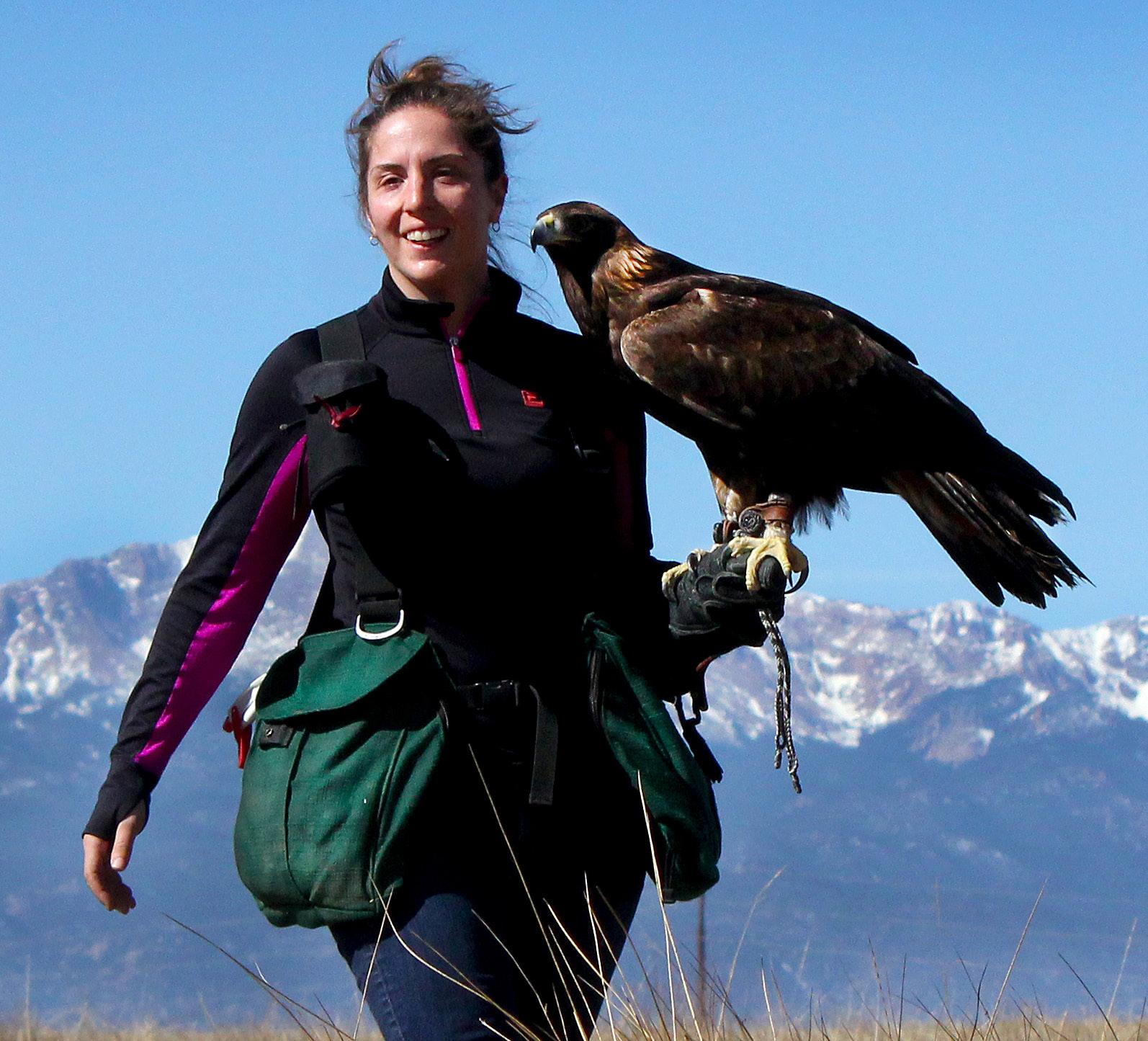
10 minute read
MELISSA AND DEREK’S QUARANTINED CRUISE

Derek and Melissa Lissner quarantined in their cabin
Melissa Lissner, Royal Caribbean performer

Melissa & Derek’s The cruise line encouraged social distancing and increased sanitization. On March 30th, after a possible positive case of Coronavirus among the crew, a 17-day complete lockdown Quarantined Cruise began. The crew was confined to their compact cabins for more than two weeks. Meals were brought to their rooms. The cruise By Maggie Murdock Nichols line did their best to take care of the crew and loaded up with as many supplies as they could before they were told to leave Australian waters.
Many of us faced cramped quarters, mundanity and limited The ship made its journey to the Philippines as the crew choices as we attempted to reduce the spread of Coronavirus. sheltered below deck. Many countries made arrangements for While we sheltered at home, Edmond native Melissa Lissner their citizens, but Americans were left without a plan. On April and her husband Derek viewed the outside world through a tiny 15th, changes were made to the lockdown. The crew was allowed porthole in an 8x15 foot cabin. Melissa performed her last show two hours a day outside, one hour in the morning and one in the as a figure skater on the ship. Without passengers, the Royal afternoon. On April 18th, Derek and Melissa were told to move Caribbean ship was left to wander aimlessly in the open seas, out of their cabin and into guests rooms. They enjoyed the larger seeking a port that would take them in. room and balcony. At this point, they could eat
Melissa began her figure skating career at the Arctic Edge Ice Rink. Early on it was clear that Melissa was bound for a professional career. Melissa has been skating for 23 years The crew were confined to their compact cabins for a 17-day lockdown in the cafeteria, but had to social distance and wear masks.
Melissa met her husband Derek through work on the cruise escorted them until they boarded their plane. They faced a ship. The couple has been married for almost two years. Melissa similar process in South Korea. They were shocked by the lack said she has visited more countries than there are states in of safety procedures when they landed in Chicago. There were the United States. The couple began work on a cruise with a no temperature checks and they were simply handed a CDC port in Sydney, Australia on November 12th of 2019. The ship pamphlet. When they finally landed in Oklahoma City, Melissa returned to port and offloaded passengers on March 18th. The and Derek were greeted by a sign displaying Coronavirus safety night before, Melissa was about to take the ice when the captain information and a few people wearing masks. announced that all performances would be cancelled and sent all The couple self-isolated in Edmond for two weeks. Not exactly guests and crew to their cabins. The crew completed a full barrier the getaway they had originally planned after their last cruise, clean and waited for further instruction. but they were thankful to be safe at home again.
On April 29th, the Americans heard they might have flights home. They rushed to pack and has spent the past 6 years skating on their belongings and stepped foot on land cruise ships. Figure skating on a cruise takes discipline and talent. for the first time in 50 days. They were put through rigorous Without a full crew and huge rink, all eyes are on the skater. screening and temperature checks. The Phillipine military








Eric Jones and Heath Jones

By Amy Dee Stephens
The Bowler and the Builder
Eric Jones admits his father might have gone a tad overboard walking out the door to bowl, and Heath enjoys playing the game when he built a fully-functioning bowling lane next to the with his son. They quit every evening by nine so they don’t annoy house—but he’s not complaining. It was one of those father/son the neighbors. projects that started small and ended with twelve trips to the Eric developed the bowling “bug” in third grade after watching hardware store. online videos of champion bowlers and trick-shot bowling. “So,
Heath Jones, the father, is not a handyman, but his son needed I took him and he scored 128 his very first time! I thought, ‘Wow a bowling lane. Why? Because Eric, an Edmond 8th grader, is a this kid is something!’ After that, he begged me to go bowling competitive bowler. Every day for four years, Eric has practiced every day,” Heath added. bowling—and then the pandemic hit, and the Eric, who describes himself as “insanely bowling alleys closed.
“He had no way to train for his next national tournament, which was pushed back to August,” Heath said. “Eric saw a YouTube video about a pro bowler who built his own practice Eric practiced bowling everyday, then the pandemic hit and the bowling alleys closed competitive,” hopes to become a professional bowler. “In December, I barely made the qualifying round at a tournament in Texas, so I decided I wasn’t going to waste my opportunity. I won eight out of nine games,” Eric said. lane and wondered if we could copy the idea.” During his 8th grade year, Eric won $11,000 at
“I said, ‘Dad, ifwe make it, let’s go big!’” said Eric. “We both put competitions, which all went into a scholarship account. Heath, in an equal amount ofeffort in the beginning, but then he went a who is a musician, is super jazzed about that. “When I was in little crazy and took over.” college at Oklahoma Christian in 1990, I was in a rock band. Our
It started with just a lane, but then Heath tired of leaning over very first job was playing at the bowling alley, the same alley to reset the pins—so he added a pin-setter and then a see-saw where Eric now practices. Now, I play saxophone there every style ball return. Although the initial set-up took about three week while Eric is practicing. It’s funny that thirty years later, weeks, the Joneses have continued to improve their set-up. The bowling and music are still part of my life,” Heath said with a pin-setter ropes became cables, and the lane now has three laugh. “Of course, all the money I earn playing goes to pay for coats of polyurethane. “And we’ve started spraying the lane with Eric’s lane fees.” cooking oil,” Heath added. And the custom-built alley in their backyard.
Even after the pandemic, the homemade bowling alley will “I’m thankful he built it, although he’s probably more excited remain a secondary practice zone. Eric enjoys the convenience of than me,” Eric joked. “Dad thinks it’s pretty sweet. I do, too.”



Dr. Lauren McGough in Mongolia
By Amy Dee Stephens
Dr. Lauren and Birds of Prey
Dr. Lauren McGough is the world’s foremost female falconer— and it’s high praise indeed, coming from the esteemed eagle trainers of Mongolia. It was on the ancient steppe near Russia that the Kazakh tribe first developed the art offalconry, which has since spread to nearly every continent. By training golden eagles to hunt for foxes on the desolate landscape, the nomads feed and clothe themselves. McGough spent a year living amongst the nomadic tribe, apprenticing herself to learn their ancient ways. She earned their respect--in a culture where only men do the hunting.
An award-winning television segment on CBS’s 60 Minutes introduced McGough’s skill to America. Not only was she handling a wild, ten-pound bird in sub-degree temperatures, she was bolting up and down steep rocky slopes on horseback, despite having no horse-handling experience.
Of course, McGough isn’t one to back down from a challenge. She also skydives and is currently working toward her pilot’s license. “It’s empowering to conquer fears. Being in a plane or parachuting also helps me feel the consequences of wind conditions, and that helps me feel more patient when my eagle doesn’t chase a jackrabbit like I expect. It’s added some finesse to my falconry.”
After leaving Mongolia, McGough, who has degrees in both biology and anthropology, spent two years in South Africa studying the Taung Child, the ancient skull of a child that was killed and eaten by an eagle. “I wondered what it would be like to hang out with an African crowned eagle,” McGough said. “I had this esoteric idea to forge a relationship with this monkey-eating bird and see it hunt naturally to see its application to the history of early hominoids.”
Hunting in the wilds of Africa
What McGough learned was a lesson in humility. “The eagle mostly eats vervet monkeys. I tried to give the eagles I worked with a chance to hunt, but the monkeys figured me out. They heard my car and disappeared. The monkeys broke into my house and ate my food. Nothing hurts your ego like being outwitted by monkeys, but it was a great adventure. While I was hunting in the wilds of Africa, I never knew what animals I would see. I saw aardvarks, aardwolves, mongoose, jackals, meerkats, and hornbills.
The laundry list of African animals took McGough back to her childhood, when she loved watching birds. “I became a junior curator at the Oklahoma City Zoo so I could watch them up close and see more than a fleeting glimpse ofa bird ofprey.” She also discovered a life-changing library book about falconers. “It seemed like something only medieval knights did until I found out about falconry in the United States. The president of the local Falconers Association became my mentor. I didn’t know anything
about training birds, but I was infatuated with the idea that I could have a relationship with a wild bird.” At the age of fourteen, McGough became a falconer.
Although McGough has worked with birds of prey around the world, she’s now back in her hometown of Oklahoma City. Her most recent project is rehabbing golden eagles to release back onto the prairie. “You can’t just heal these birds and chuck them back into the wild,” McGough said. “The young birds are clumsy and slow-developing. If a parent had not taught them to hunt, their mortality rate is almost 100%, so I train them to fly and catch rabbits before releasing them.”
Studying golden eaglesin Oklahoma
McGough is always seeking local landowners with open space who will allow her to train with the birds. She’s also working with the U.S. Fish & Wildlife Department to study golden eagle deaths in Oklahoma, specifically in the Panhandle where they overwinter. “Their main cause of death is from gunshot. We want to know why they are being shot, despite fines and prison time. Fearful ranch owners or maybe native peoples wanting the feathers? I’m hoping to find positive interventions.”
Once that study concludes, McGough is unsure what her next adventure will be, but admits that a decade of seeking grant projects and competing for funding is an insecure way to live. “Of course, if you pick a place no one else wants to go, like Mongolia, it’s not as competitive!” No matter what comes next, McGough is a falconer for life.
“It’s magical to watch them hunt. It’s something primal that has happened every day for millions of years. I love watching these crazy aerobatics happen right in front of me, which are normally hidden in the wild. It’s like watching a modern-day velociraptor as the eagle swoops in, but the rabbit is amazing, too, jumping in the air, even flipping over as the two try to outwit each other. It all happens in a few amazing seconds, and I love it.”
To learn more, visit laurenmcgough.com or okfalconersassoc.com

Photo Submitted







